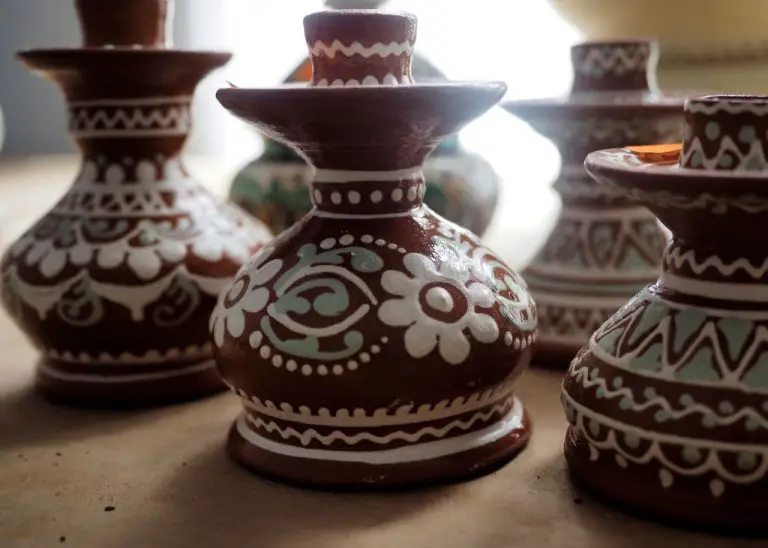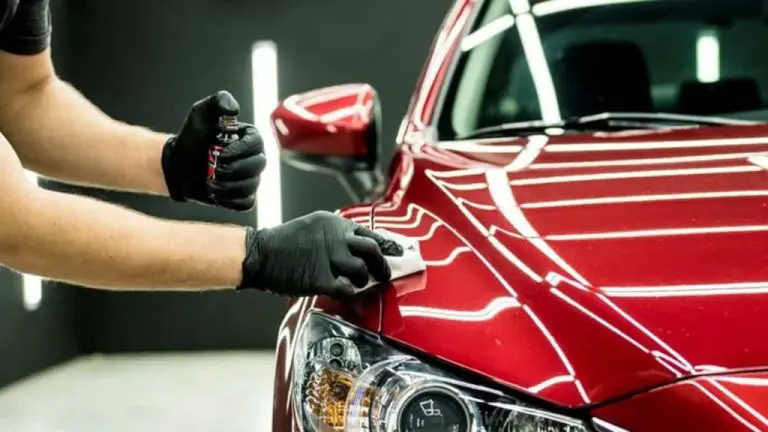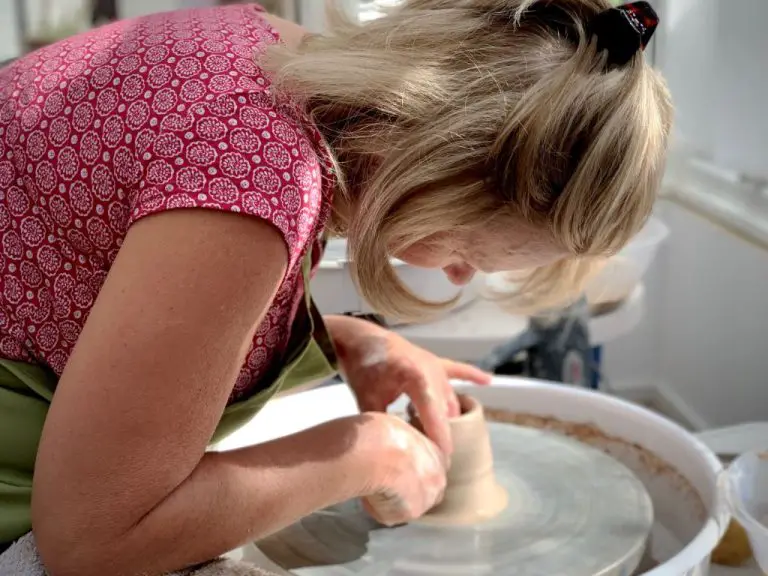Can We Use Clay To Make Statue?
Introduction
Clay is a type of fine-grained natural soil material that is malleable when wet and hard when dry. It is composed primarily of hydrated silicates of aluminum and other minerals. Clay has been used for thousands of years to create pottery, sculptures, and other artistic works. Statues and sculptures specifically refer to a three-dimensional artistic form created by shaping, carving, molding, or casting techniques. The purpose of this article is to provide an overview of how different types of clay can be used to make statues and sculptures.
This article will cover the properties of clay that make it useful for sculpting, including clay preparation, sculpting techniques, drying and firing processes, and finishing methods. Examples of famous historical and modern clay sculptures will be provided. An evaluation of the advantages of clay as a sculpting material versus other options like stone, wood, or metal will also be included. By the end, readers will have a comprehensive understanding of clay sculpting processes and considerations.
Types of Clay
There are several different types of clay that can be used for sculpting. The most common types include:
Earthenware Clay
Earthenware clay is one of the most basic and readily available clays. It contains more minerals and other natural materials than other types of clay. It fires to a more porous, softer state than other clays. Earthenware clay is typically used for pottery and craft projects, although it can be used for sculpting simple figurines and items that do not require very fine details.
Stoneware Clay
Stoneware clay fires to a harder, denser state than earthenware clay. It holds fine detail well and works well for sculpting. Some of the best clays for sculpting statues and figures are stoneware clays. However, stoneware clays tend to fire to a gray or brown color unless glazes or stains are applied.
Porcelain Clay
Porcelain clay fires to a very hard, almost glass-like finish. It is extremely fine and smooth and capable of capturing very intricate detail. Porcelain is one of the best clays for sculpting lifelike figures. However, it can be more challenging to work with and requires very high firing temperatures.
Polymer Clay
Polymer clay is a synthetic modeling clay that cures at low temperatures in a regular oven. It comes in a wide variety of colors and is easy to work with. Polymer clay can capture fine details but does not have quite the structural strength of high-fire clays. It works well for decorative items and jewelry.
When selecting a clay for sculpting, porcelains and stoneware tend to be the best choices for capturing highly detailed figures. However, the appropriate type depends on factors like the sculptor’s skill level, intended use, firing capabilities, and complexity of the design.
Clay Preparation
Before clay can be used for sculpting, it must go through an important preparation process. This involves proper wedging, kneading, and conditioning of the clay body.
Wedging is a technique of cutting, folding, and pressing the clay to remove air bubbles and evenly distribute moisture. It is critical for achieving a uniform consistency and preventing cracking and explosions during firing. To wedge, cut the clay into chunks and throw it down on a wedging table, compressing it. Then fold the clay over itself and repeat, gradually working the entire mass.
Kneading is done by hand, pressing and folding the clay repeatedly to achieve smoothness. Work the clay until it is soft, pliable, and free of lumps or dry spots. Using your palms, push down and away on the clay in a circular motion.
Some clays also benefit from aging or slaking before sculpting. This involves mixing the clay with water to a soft, loose consistency and allowing it to sit wrapped in plastic for several days or weeks. The aging process allows complete hydration and improves plasticity.
Properly conditioned clay is smooth, elastic, and responsive to sculpting. Adequate preparation is essential for preventing cracking and achieving your desired forms.
Sculpting Techniques
There are several techniques that can be used when sculpting with clay. The three main techniques are modeling, carving, and casting.
Modeling involves shaping the clay by hand. The clay is rolled, pinched, and smoothed until the desired form is achieved. Modeling allows the artist to work intuitively and quickly build up the sculpture from scratch.
Carving starts with a solid block of clay. The sculptor removes clay using tools to reveal the final sculpture inside. Carving requires seeing the end result in the starting block of clay. It can allow for very intricate designs but requires more planning.
Casting makes use of molds. The sculptor first creates a model out of clay or another material. This model is used to create a mold which is then filled with liquid clay to produce a cast sculpture. Casting allows for consistency and replicating existing forms.
When sculpting clay, artists use specialized tools to manipulate and shape the material. Metal loop tools scrape and refine areas. Spatulas smooth surfaces. Wire tools cut and carve lines. Ribs compress form. Wooden tools can be used to texture patterns. A pottery wheel spins clay to aid in shaping symmetrical objects.
The techniques allow sculptors to create both figurative works portraying people and animals as well as abstract shapes. Details like facial expressions, muscle tone, feather patterns, etc. can be molded to achieve a realistic look. The clay can be pinched, rolled, cut, scraped, and more to form the desired texture and design. With practice and skill, clay can be formed into any shape imaginable.
Drying and Firing
Allowing clay sculptures to dry properly before firing is a critical step. When clay is first formed, it contains water which must be slowly evaporated out. Rushing the drying causes cracking and warping.
Air drying clay sculptures is possible but very slow. For better results, use a low temperature oven or dehydrator to gently remove moisture while minimizing cracking. Monitor closely and keep air circulation going. Drying time depends on clay thickness but can take days or weeks.
Once fully dried, clay must be fired in a high temperature kiln to permanently harden it through sintering. Temperatures typically range from 1800°F to 2300°F depending on the clay type. Higher temperatures result in harder, more durable clay with less porosity.
During firing, complex chemical processes occur as materials in the clay composition undergo transformation. The clay changes color, becomes water resistant, and gains significant strength. Careful control of kiln temperatures and timing is necessary to achieve desired effects.
Firing clay requires proper equipment like kilns and pyrometers. The process is energy intensive but essential for creating lasting ceramic artwork. With proper drying and firing techniques, clay can be shaped into remarkable sculptures.
Finishing Techniques
Once a clay sculpture has been fully dried and fired, there are a variety of finishing techniques that can be used to complete the piece. Two of the most common finishing techniques for clay sculptures are sanding/smoothing and painting.
Sanding and smoothing clay serves multiple purposes in finishing a sculpture. It levels any uneven surfaces and removes any marks left over from sculpting tools. Sanding also preps the surface for painting by creating a uniform texture that allows paint to adhere evenly across the sculpture. Start with a coarse grit sandpaper to remove bigger irregularities and then gradually use finer grits to smooth the surface. Be cautious not to sand away finer details and textures.
Painting clay sculptures opens up endless creative options for adding color, details, and visual interest. Acrylic and oil paints formulated for ceramics work best on fired clay. Make sure to use a ceramic sealer first to protect the clay sculpture and provide a surface for the paint to stick to. Apply paint in thin layers, allowing each coat to dry fully before adding another layer. Use small brushes for detail work and larger brushes for broader areas of color. The painting techniques used on canvas can also be applied to clay sculptures.
Other common finishing techniques include adding stains, glazes, or a protective sealant to modify the look and feel of the fired clay sculpture. With the right finishing techniques, an artist can transform a raw clay sculpture into a vivid, polished art piece.
Notable Clay Sculptures
Throughout history, many famous statues and sculptures have been created using clay. Clay is appreciated by sculptors for its malleability and ability to be molded into intricate shapes and details. Some of the most notable clay sculptures include:
The Terracotta Army – This famous funerary art consisting of over 8,000 life-size clay soldiers, horses, and chariots was built for the burial complex of Qin Shi Huang, the first emperor of China. The figures were molded individually using molds and hand details. The Terracotta Army represents the power of Qin Shi Huang’s military force.
Michelangelo’s David – This iconic Renaissance sculpture depicting the Biblical David was carved from a giant block of marble by Michelangelo between 1501-1504. The original sculpture stands 17 feet tall. Michelangelo also produced clay models of the sculpture at a smaller scale.
The Thinker – Originally conceived as part of Rodin’s Gates of Hell, this famous sculpture represents a nude male in a contemplative pose. Rodin used clay models extensively when developing The Thinker and other bronze cast sculptures. Several monumental sized Thinkers have been produced in bronze from the original clay works.
Auguste Rodin Sculptures – Many of French sculptor Auguste Rodin’s famous bronze sculptures like The Kiss and The Burghers of Calais were first modeled in clay. Rodin was a master of modeling clay and used it to create one-of-a-kind sculptures.
Maya Ceramic Figurines – Ancient Maya civilizations produced many clay figurines, whistles, and masks. These were molded and shaped by hand from clay, then painted with pigments. Common forms include standing figures, seated nobles, and mythological shapes. The figurines provide insight into Maya culture and artistry.
Clay vs Other Materials
Clay has both advantages and disadvantages compared to other sculpting materials like marble, bronze, and wood. Here is an overview of how clay stacks up:
Clay Pros:
- Very low cost compared to marble or bronze
- Highly malleable and easy to work with
- mistakes are easy to fix by remolding the clay
- No special tools needed beyond basic sculpting tools
- Fast to work, sculptures can be made quickly
Clay Cons:
- Brittle when dry, requires firing process
- Can crack or break if dried improperly
- Relatively fragile after firing unless a very high temperature is used
- Color limited to red/brown/terra cotta unless glazed
- Does not last as long outdoors as marble or bronze
Marble Pros:
- Very durable and long lasting for outdoor sculpture
- Can be polished to a smooth, lustrous finish
- Classic material for sculptures through the ages
Marble Cons:
- Extremely expensive and heavy material
- Very difficult to carve and work with
- Mistakes are costly and very hard to fix
- Limited range of colors compared to clay
Bronze Pros:
- Highly durable for outdoor use
- Can be cast from clay sculptures
- Takes fine detail and has metallic luster when polished
Bronze Cons:
- Expensive material and casting process
- Heavy weight makes sculpting and transport difficult
- Cannot easily make alterations after casting
- Limited range of coloring compared to clay
Wood Pros:
- Relatively inexpensive and accessible material
- Easy to carve and work with basic tools
- Wide range of colors and textures
Wood Cons:
- Less durability than stone/metal for outdoor use
- Susceptible to cracking and rotting over time
- Limited size based on dimensions of wood source
- Not as refined a medium as marble or bronze
As this overview shows, clay has a unique set of advantages and disadvantages compared to other sculpting media. Its malleability and ease of use makes it ideal for beginners, while its fragility requires special care. For large, refined outdoor sculptures, marble and bronze have clear benefits. But for versatility, cost, and ease of sculpting, clay is hard to beat.
Modern Clay Sculpting
In recent years, clay sculpting has benefited from innovations in materials and technologies. New types of polymer and oil-based clays offer advantages over traditional water-based clays. Polymer clays like Sculpey and FIMO are easy to work with, require no firing, and produce durable finished pieces.
Some oil-based clays like plasticine allow sculptors to create flexible, non-drying models. These clays make it easier to create realistic figures and make changes during the sculpting process. They can be used to create maquettes and prototypes before translating the design to a final sculpture in traditional clay.
Advances in 3D scanning and printing have also opened up new creative possibilities. Sculptors can scan a clay model and digitally refine the design before 3D printing it in clay. This allows greater precision and consistency when producing multiples or scaling up sculptures.
While traditional techniques are still widely used, modern clays and technologies give sculptors more options for realizing their creative visions. They make clay sculpture more approachable and allow artists to work in new ways.
Conclusion
Sculpting with clay offers a unique joy from starting with a lump of earth and transforming it into an artistic creation. Throughout time, artists have turned to clay as a medium because of its versatility, availability, and forgiving nature. With practice, anyone can learn to sculpt with clay. While simple techniques like pinching and coiling allow beginners to start creating right away, sculptors also employ armatures, molding, and advanced finishing to realize their visions.
From ancient Greek figurines to modern masterpieces, clay remains one of the foremost mediums to bring sculptures to life. While other materials like stone, metal, and wood require greater strength and tools, clay empowers artists to easily shape intricate forms using their hands. Its responsive nature enables continuous refinement as sculptors add, remove, and smooth the material during the creative process. Once completed,clay sculptures can be left to air dry or fired in a kiln to harden them permanently.
Clay endures as an accessible, versatile, and engaging artistic material. With a rich history and promising future, working with clay allows both novice and expert sculptors to give tangible form to their imagination.




